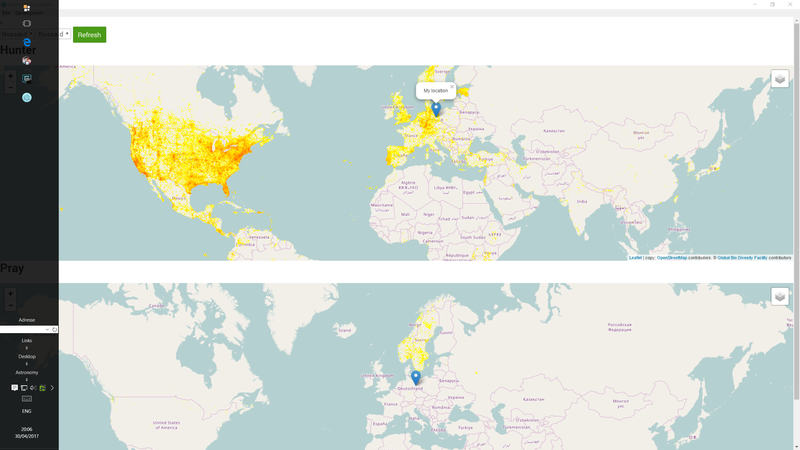200% Zoom | Where the Genes Flow
The Challenge | Where the Genes Flow
Browser GBIF Species Data
This app allows to campare the distribution of various species

This browser display data from GBIF provides via the MAP API. It allows the select predators like "Bussard" and there pray. Naively speaking there should be less mice the more predetors praying on them. The pressure created by the predetors is one factor for nigration of prayed species in different regions. In order to detect such patterns the data has to be inspected visually for changes over the time.The first idea was to support the observer by tools like creating a gradient chart from the data. Unfortunatly the MAP services is providing only images but not grid of values which would allow processing by creating a gradient chart. Such a chart would be helpful to detect changes in the population. In fact the nature of the data base is not fitting to this target since the addressed timescale is well larger then one year.
Climatic influences are taken into account but they are not visible yet since the implementation is not finished.
The app is build on the electron framework which makes it deployable on Linux as well. The core logic has been implemented using JavaScript using various commonly used libraries like INK, JQuery, Leavelet.
THe sourcecode is maintained at https://github.com/merdmann/3delectron
One challenge which could not overcome is the limitation of the GBIF Map API. It allows to query for exactly one species. In case of the paryer/predetor model; this is not sufficient since typically not only on species is the pray of a preditor!
This project has proven that basically the electron framework is a platform for development of further visualisation projects because it provides a well proven rendering engine (chromium). Connecting to network resources is seamless supported via JQuery running on chromium.
SpaceApps is a NASA incubator innovation program.